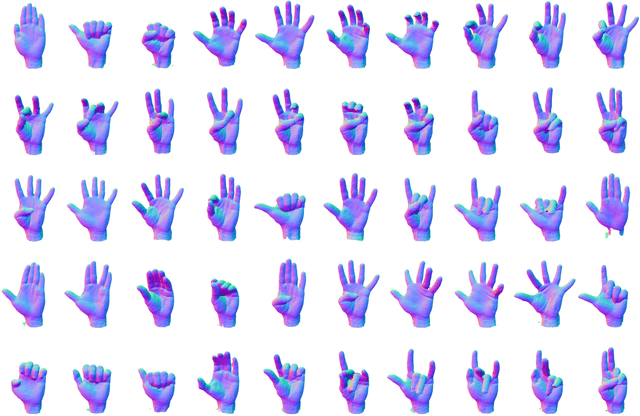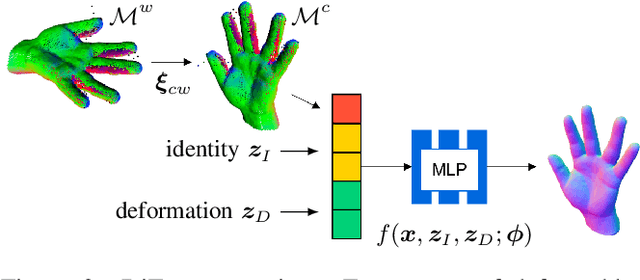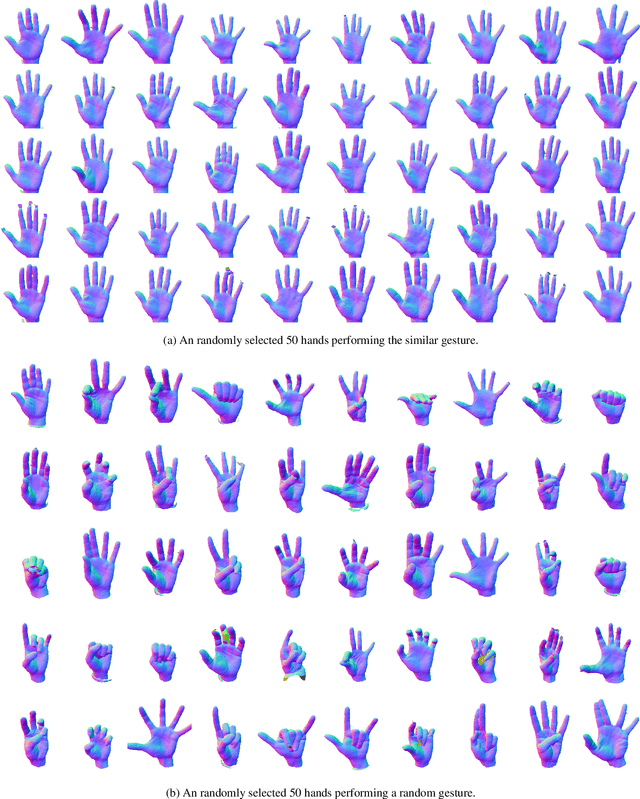Identity-Disentangled Neural Deformation Model for Dynamic Meshes
Paper and Code
Oct 04, 2021



Neural shape models can represent complex 3D shapes with a compact latent space. When applied to dynamically deforming shapes such as the human hands, however, they would need to preserve temporal coherence of the deformation as well as the intrinsic identity of the subject. These properties are difficult to regularize with manually designed loss functions. In this paper, we learn a neural deformation model that disentangles the identity-induced shape variations from pose-dependent deformations using implicit neural functions. We perform template-free unsupervised learning on 3D scans without explicit mesh correspondence or semantic correspondences of shapes across subjects. We can then apply the learned model to reconstruct partial dynamic 4D scans of novel subjects performing unseen actions. We propose two methods to integrate global pose alignment with our neural deformation model. Experiments demonstrate the efficacy of our method in the disentanglement of identities and pose. Our method also outperforms traditional skeleton-driven models in reconstructing surface details such as palm prints or tendons without limitations from a fixed template.
 Add to Chrome
Add to Chrome Add to Firefox
Add to Firefox Add to Edge
Add to Edge